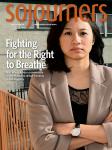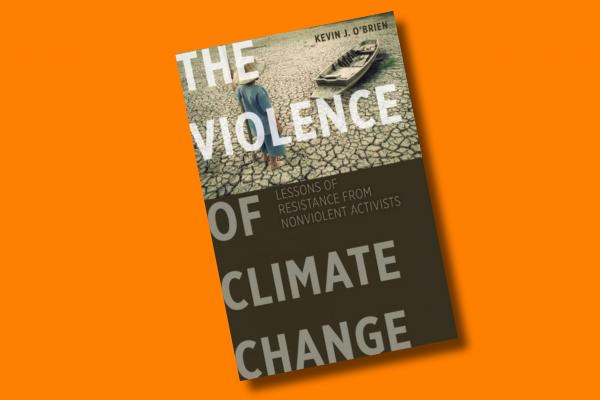DON'T LET THE prestigious academic publisher put you off: The Violence of Climate Change is engagingly informative as it fuses theory and praxis through the narratives of inspirational nonviolent activists. Nor is it satisfied with the ideal, as it honestly and realistically engages current counterarguments and positions throughout. As such, it’s exceptionally suitable for undergraduates, who are often surprised, then pleased, to discover religion and theology’s relevance for addressing urgent ethical issues.
And what could be more pressing and threatening today than violence—in our city streets and between or within other nations, especially the growing possibility of nuclear war—and climate change? So I hope this book also finds its way to Sunday schools, adult religious education sessions, book club meetings, or pretty much anyone involved in the climate justice movement.
Author Kevin J. O’Brien, dean of humanities and associate professor of Christian ethics at Pacific Lutheran University, defines the problem of climate change as also a problem of structural violence, caused primarily by privileged, powerful nations, corporations, and individuals through simple decisions and complex systems over the generations. Those least responsible are also the most vulnerable and more detrimentally impacted.
O’Brien highlights five U.S. Christ-ians—Dorothy Day, Martin Luther King Jr., Cesar Chavez, Jane Addams, and John Woolman—spanning the 18th to 20th centuries and providing lessons in nonviolent resistance not only to war but also to slavery, racism, sexism, poverty, and economic injustice. Although they did not face climate change, these women and men are examples “for creative and active resistance against the violence of climate change ... in an organized, thoughtful, and faithful way.” At the same time, O’Brien notes that they are only human, with mistakes, failures, and faults—all the more reason why they should inform and inspire us.
Each exemplifies a unique commitment to nonviolence, allowing readers to imagine which resonates most with their own disposition and gifts. Woolman, a Quaker abolitionist, sought to free himself from any personal privileges and benefits derived from the institution of slavery. Addams reflects how one can have a “glocal” (both local and global) impact as she served the poor and immigrant population of her Chicago neighborhood while traveling nationally to lobby the U.S. government for a social safety net and internationally to work for world peace. Day, co-founder of the Catholic Worker movement, illustrates how nonviolent activism can incorporate both individual and communal faith commitments. King offers hope as an alternative to “both cynical despair and blind optimism” in an uncertain world. Chavez teaches personal and political sacrifice strategically used.
O’Brien perhaps lessens the force of the book’s argument when he writes, “I am not trying to prove here that nonviolence is always the best way to resist violence, only that it is sometimes a viable form of resistance and has something important to teach privileged people who seek climate justice.” I would substitute “often” for “sometimes” in that sentence, since empirical studies, such as those by the late Gene Sharp, demonstrate that nonviolent methods are more effective, and violent means less effective, than generally assumed.
Even “just war” Christians should agree that nonviolent methods of resistance ought to be tried before turning to violence. O’Brien might have looked at how “just war” and more pacifistic Christians could collaborate in nonviolent resistance to the violence of climate change.
The “just peacemaking” paradigm of the late Glen Stassen bridged that divide; while the pacifist and “just war” Christians participating in that project focused on international relations, some attention was given to the environment. Likewise, in Laudato Si’, Pope Francis calls for an “integral ecology” that cares for creation and encompasses his predecessor Pope Benedict XVI’s insight that “the protection of creation and peacemaking are profoundly linked!” We also need an “integral peacebuilding” that gives primacy to the nonviolent resistance approaches O’Brien emphasizes so well but also seeks explicitly and persuasively to include people not committed fully to nonviolence.

Got something to say about what you're reading? We value your feedback!

